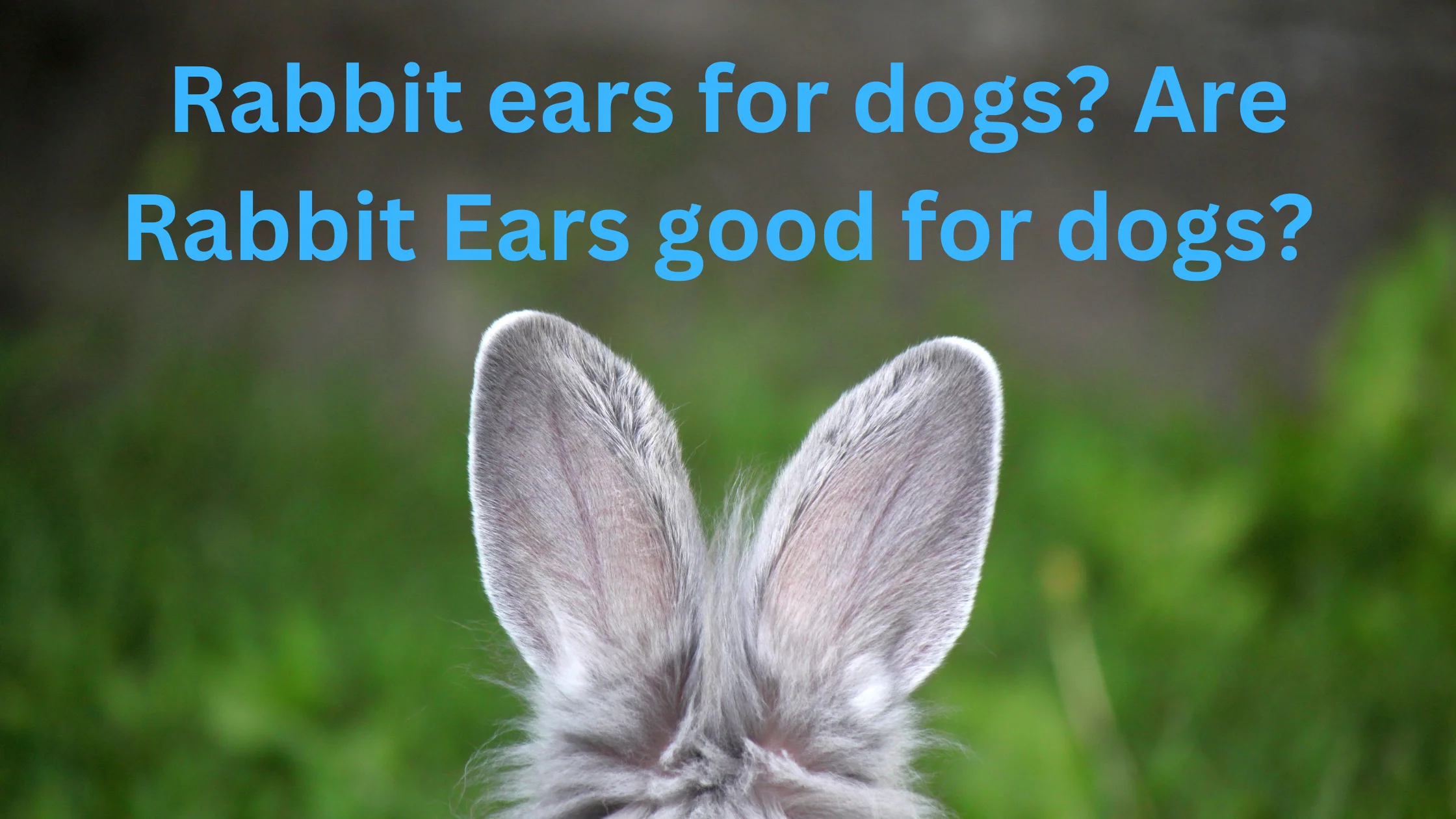Rabbit Ears for Dogs, the newest way to give your furry friend a delicious, healthy treat! Rabbit ears have become increasingly popular among pet owners due to their high nutritional value, low cost, and easy preparation.
Are you wondering if you can feed your beloved pup rabbit ears? It may seem like a strange question, but you are not alone! Many dog owners are curious about the safety of feeding their pooches rabbit ears. This article will examine the nutritional benefits and potential risks associated with feeding your dog rabbit ears.
What are Rabbit Ears?
Rabbit ears are by-products from the rabbit meat industry. They are usually found attached to the carcass of the animal during processing. However, some people buy them separately and sell them online.
Most rabbit ears sold in the United Kingdom are sourced from Europe, although China is the largest producer in the world, so you should always check the packaging to make sure they haven’t been produced there.
European rabbit farming welfare standards are much better than those in China. After harvesting, the ears are either dried out in the sun or frozen, with or without their hair. This ensures they have a long shelf life.
Once harvested, the ears can be stored in airtight containers for up to 18 months. Freeze-dried ears can also be stored for up to 30 days once opened, but they must be kept in a cool, dry environment.
also read: Can dogs eat veal? Best Decisive Guide to Veal for dogs?
Are rabbit ears good for dogs? Can Dogs Eat Rabbit Ears?
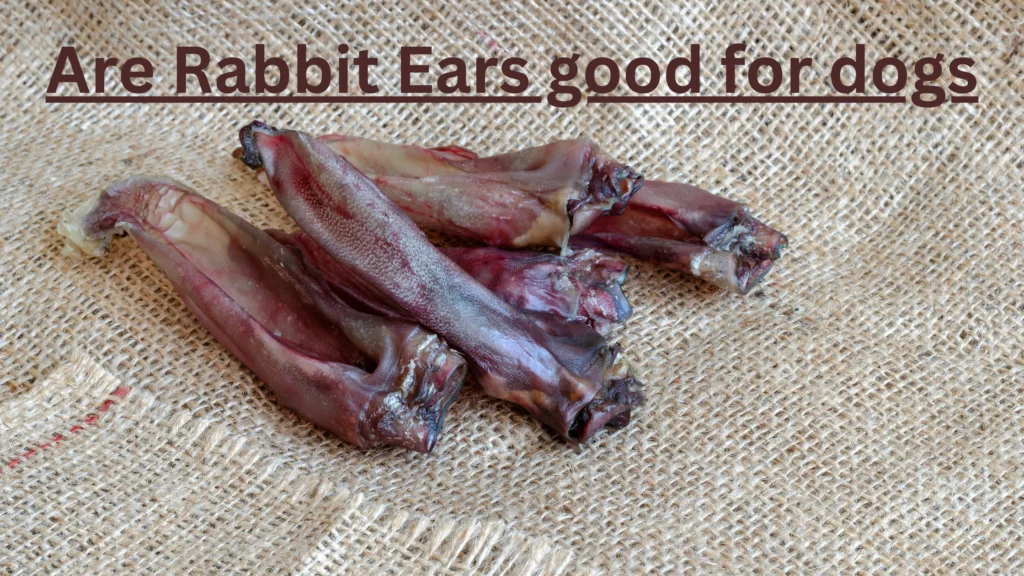
Yes, it is safe for dogs to eat rabbit ears. Rabbit ears are a good source of protein, iron, and other essential vitamins and minerals. However, it is important to note that rabbit ears should be served in moderation. Too many rabbit ears can upset a dog’s digestive system and cause stomach upset.
Nutritional packed in Rabbit Ears
Rabbit ears are a great source of protein, which is important for muscle health and development. They are also a good source of iron, which helps to maintain healthy blood cells and is important for energy production. Rabbit ears are also a good source of magnesium, zinc, and selenium, which help to support the immune system and promote healthy skin and coat. Rabbit ears are also a good source of omega-3 fatty acids, which are important for brain health and development.
The Benefits of feeding Rabbit Ears to dogs
Rabbit ears are one of the most popular foods for dogs. They are nutritious and delicious.
However, not everyone knows the health benefits of giving rabbits ears to dogs. Here are the top 10 benefits of feeding rabbit ears.
Improved dental health
Because rabbit ears are dehydrated, they create an abrasively action against the surface of your teeth when they’re chewn. It helps remove plaque and the buildup of food.
Improved digestion
Some rabbits’ ears are covered in fur. As the hair passes through the intestines, the hair helps brush out any unabsorbed foods, which improves the intestine’s absorption abilities.
Natural deworming
Just like how rabbit ears improve digestive health by helping to clean out the intestines, so too do hairbrushes help to remove parasites from the intestines. Worms are not completely killed, so worming treatments will still be needed, but they can keep the worm burden low enough for the animals to live longer.
Improved anal gland health
Hair contains fibres, which help to firm up the stool. If your pet has recurring anal gland impaction issues, firm stool will help squeeze them out as they pass by, which will result in fewer impactions and less secondary infection.
Decreased anxiety
Chewing helps dogs relax by triggering an increase in their levels of endorphins. Chewing is an effective way to distract yourself from stressful situations, such as when watching fireworks or hearing thunder.
Hypoallergenic
Some producers of rabbit ear antennas say their products are hypoallergenic and are suitable for dogs who have food allergies. While this isn’t entirely true, as rabbits aren’t usually allergic to dogs, they are rarely allergic to them either. Because most dogs with allergies can handle it well.
Rabbit Ears Help Reduce Dog Biting Behavior
Dogs often bite each other and humans due to stress, fear, and anxiety. If your dog bites another person, he may be suffering from separation anxiety. Feeding him rabbit ears helps relieve his anxiety and reduces biting behavior.
Rabbit Ears Promote Healthy Skin
Eating rabbit ears promotes healthy skin. This means that your dog has a shiny coat and no rashes.
Rabbit Ears Increase Exercise Capacity
Giving your dog rabbit ears boosts exercise capacity. This means that your pet gets fitter faster.
Rabbit Ears Make Dogs Happy
Happy pets are easier to train. Eating rabbit ears makes your dog happy, which makes training easier.
Rabbit Ears Can Be Used As Treats
Treats are a reward for good behavior. Giving your dog rabbit ears is a treat for good behavior.
Rabbit Ears Boost Immunity
Eating rabbit ears boosts immunity. This means that your puppy is protected against diseases and infections.
Rabbit Ears Prevent Hair Loss
Hair loss is common among older dogs. However, eating rabbit ears prevents hair loss.
Rabbit Ears Contain Vitamins
Vitamins are essential nutrients that our bodies cannot produce. These vitamins are found in food such as eggs, milk, cheese, meat, fish, vegetables, and fruits.
Rabbit Ears Provide Essential Nutrients
Rabbit ears provide essential nutrients. This means that they contain protein, carbohydrates, fats, minerals, and fiber.
Do you feed your dog rabbit ears? Share your experiences below!
Potential Risks of Feeding Your Dog Rabbit Ears
As with any food, there can be potential risks associated with feeding your dog rabbit ears.
- Too many rabbit ears can upset a dog’s digestive system and cause stomach upset.
- Rabbit ears are also high in fat, so it is important to feed them in moderation.
- Additionally, it is important to ensure that the rabbit ears you serve your dog are fresh and free from bacteria or parasites.
Types of Rabbit ears for Dogs
When it comes to rabbit ears for dogs, there are several types available, including freeze-dried, cooked, and raw rabbit ears. Each type has its own benefits and drawbacks that you should consider before giving them to your dog.
Raw Rabbit Ears for dogs
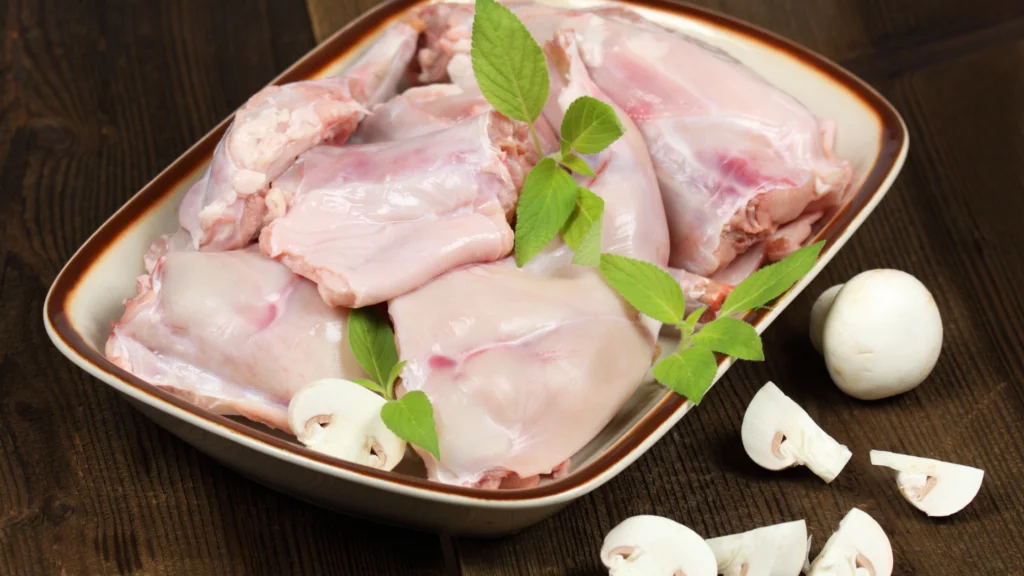
Raw rabbit ears for dogs are the least processed form of rabbit ears available, which makes them the most natural option. Raw rabbit ears do not have the same crunchy texture as freeze-dried or cooked ears and are generally not as flavorful. However, they are the most nutritious option, as they retain all of the essential vitamins and minerals found in fresh rabbit ears. Raw ears should always be stored in the refrigerator and consumed as soon as possible after purchase.
Raw rabbit ears are packed with essential vitamins and minerals, including proteins, vitamins, and minerals that are essential for your dog’s health. They are also high in fat and calories, so they should be given in moderation. Raw ears are a great source of healthy fats, which can help to keep your dog’s coat and skin healthy.
Raw rabbit ears are a great treat for dogs, but they should always be given in moderation. Too many raw ears can lead to an upset stomach or other digestive issues. Additionally, raw ears can be a choking hazard, so they should always be broken into smaller pieces before giving them to your dog.
Cooked Rabbit Ears for dogs
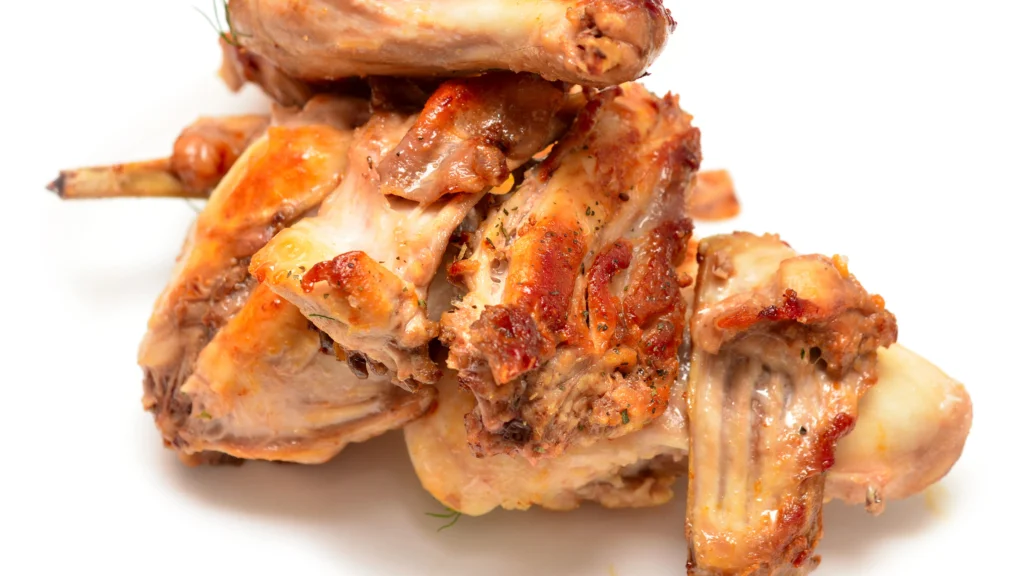
Cooked rabbit ears for dogs are another type of rabbit ear that is available for dogs. These ears are cooked and then packaged for sale. Cooked rabbit ears typically have a softer texture than freeze-dried ears and are often flavored with spices or other ingredients to make them more appealing to dogs. Cooked ears usually have a shorter shelf life than freeze-dried ears, however, so they should be consumed quickly after purchase.
Cooked rabbit ears are a great source of protein and other essential vitamins and minerals. They also have a higher fat content than freeze-dried ears, so they should be given in moderation. Additionally, cooked rabbit ears are usually more expensive than freeze-dried ears, so they may not be the most cost-effective option.
Cooked rabbit ears are a great treat for dogs, but they should always be given in moderation. Too many cooked ears can lead to an upset stomach or other digestive issues. Additionally, cooked ears can be a choking hazard, so they should always be broken into smaller pieces before giving them to your dog.
Freeze-Dried Rabbit Ears for dogs
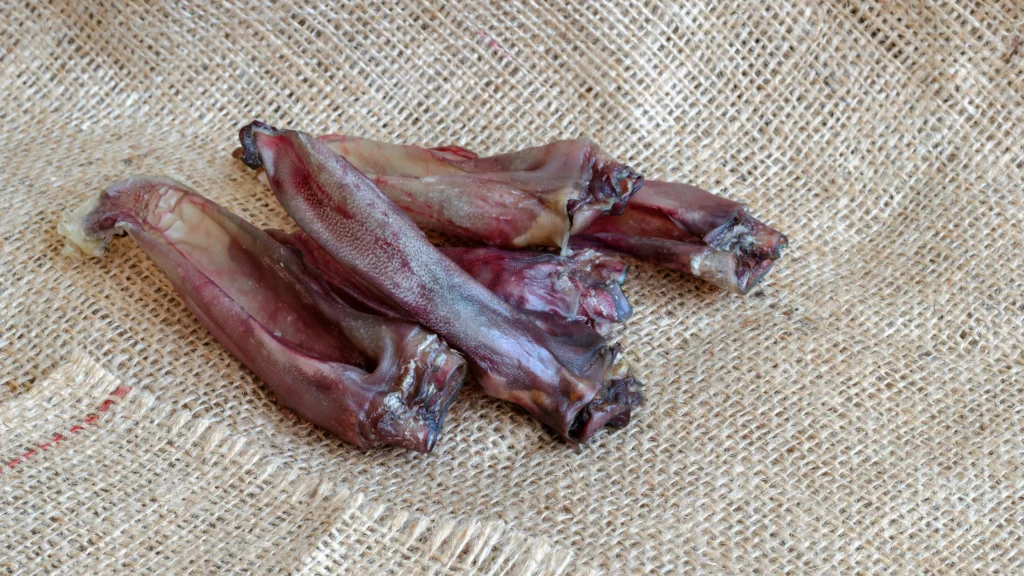
Freeze-dried rabbit ears for dogs are a popular choice for many pet owners. Freeze-dried rabbit ears are dried and sealed in airtight packaging, which helps to preserve the flavor and nutrition of the ears. They have a crunchy texture and can be easily broken into smaller pieces for smaller dogs. Freeze-dried ears also have a longer shelf life than other types of rabbit ears and are generally more affordable than other types.
Freeze-dried rabbit ears are packed with nutrients, including proteins, vitamins, and minerals that are essential for your dog’s health. They are also high in fat and calories, so they should be given in moderation. Freeze-dried ears are a great source of healthy fats, which can help to keep your dog’s coat and skin healthy.
Freeze-dried rabbit ears are a great treat for dogs, but they should always be given in moderation. Too many freeze-dried ears can lead to an upset stomach or other digestive issues. Additionally, freeze-dried ears can be a choking hazard, so they should always be broken into smaller pieces before giving them to your dog.
Types of Dried Rabbit Ears for dogs
When shopping for dried rabbit ears for your dog, you’ll find that there are a few different types to choose from.
- The most common type is the whole ear, which is exactly what it sounds like – an entire dried rabbit ear. Whole ears are typically large in size and can be quite chewy, so they are perfect for larger dogs.
- You can also find split ears, which are simply half of a dried rabbit ear. Split ears are smaller in size and are less chewy than whole ears, making them ideal for smaller dogs or puppies.
Finally, you can purchase smaller pieces of dried rabbit ears, which are the perfect size for training treats.
How to Select the Right Dried Rabbit Ears for Dog
When selecting dried rabbit ears for your dog, it is important to choose the right size and type.
- If you have a large dog, then you should opt for whole ears, as they will be the most satisfying for your pup.
- For smaller dogs or puppies, split ears or smaller pieces are the best option.
It is also important to read the label on the package to make sure the ears you are purchasing are all-natural and free of any preservatives or additives. This will ensure that you are giving your dog the best and healthiest treat possible.
Pros and Cons of Rabbit Ears for dogs
Rabbit ears for dogs are a popular treat for dogs, providing them with an enjoyable snack while also providing a healthy source of proteins, vitamins, and minerals. However, not all rabbit ears are created equal, and it’s important to know what types of rabbit ears are best for your dog. Each type of rabbit ear has its own benefits and drawbacks, so it’s important to weigh these pros and cons before giving them to your dog.
Freeze-dried rabbit ears for dogs are a popular choice for many pet owners. They are packed with essential vitamins and minerals, are generally more affordable than other types, and have a longer shelf life. However, they are high in fat and calories, can lead to an upset stomach, and can be a choking hazard.
Cooked rabbit ears for dogs are another type of rabbit ear that is available for dogs. They typically have a softer texture than freeze-dried ears and are often flavored with spices or other ingredients to make them more appealing to dogs. However, they have a shorter shelf life than freeze-dried ears, are usually more expensive than freeze-dried ears, and can also lead to an upset stomach or be a choking hazard.
Raw rabbit ears are the least processed form of rabbit ears available, which makes them the most natural option. They retain all of the essential vitamins and minerals found in fresh rabbit ears, are high in fat and calories, and are a great source of healthy fats. However, they do not have the same crunchy texture as freeze-dried or cooked ears and are generally not as flavorful. Additionally, they should always be stored in the refrigerator and consumed as soon as possible after purchase.
Frequently Asked Questions
Is it safe for dogs to eat rabbit ears?
-Rabbit ears are not poisonous to dogs. However, they may cause diarrhea if eaten in large quantities.
Are rabbit ears without fur good for dogs
-Rabbit ears without fur are not good for dogs. Hair contains fibres, which help to firm up the stool and also As the hair passes through the intestines, the hair helps brush out any unabsorbed foods, which improves the intestine’s absorption abilities.
What age can dogs eat rabbit ears?
– From 4-5 month age puppy can start eating rabbit ears but only in small quantity.
How do you cook rabbit ears for dogs?
– Rabbit ears are cooked by placing them in boiling water until they turn tender. Then place them in cold water to cool before serving.
Conclusion
Overall, rabbit ears can be a great treat for dogs, but they should always be given in moderation. It’s important to consider the pros and cons of each type of rabbit ear before giving them to your dog to ensure that they are getting the best nutrition and the safest treat possible.
